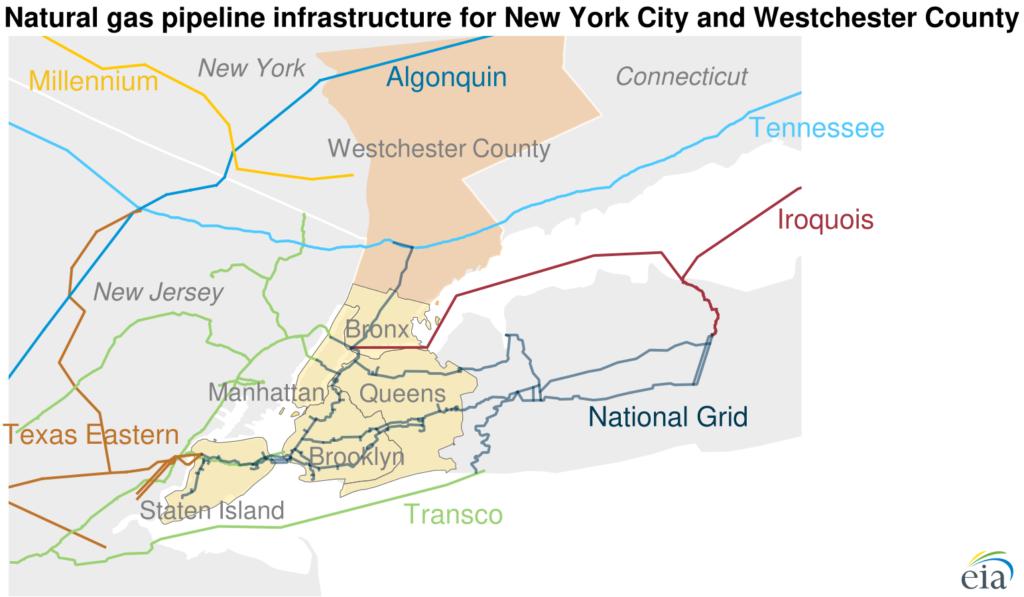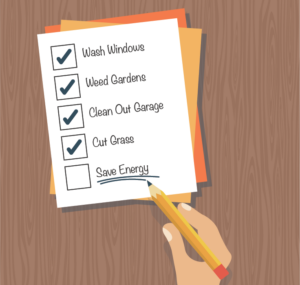Discussing Non-Pipeline Alternatives with ACEEE, National Grid and MyHEAT
Most of us don’t think about how energy reaches our homes. However for some people, this is all they think about.
The American Council for an Energy-Efficient Economy (ACEEE) brought some of these people together to talk about the challenges and solutions in delivering gas to homes in parts of New York. This post offers a quick recap of MyHEAT’s conversation with National Grid New York (National Grid), including a glimpse at how they are using MyHEAT’s visual and comparable heat loss details as an energy efficiency non-pipe alternative solution!
Related reading: Energy Efficiency in New York State
How does energy reach our homes?
The way we power, heat and cool our homes is as simple as the flick of a switch, but what happens behind that switch is incredibly complicated. Utilities maintain a complex infrastructure designed to deliver molecules of energy from their point of origin to all pipes and wires coursing throughout homes and neighbourhoods.
The infrastructure we use today is largely the same infrastructure that was designed and built several decades ago. Over the years, cities have grown and more people now need more energy so utilities, energy providers and grid operators added new components to the energy system to deliver more molecules to where they were needed.
As populations continue to grow and as more severe and unexpected weather patterns emerge, energy to heat and cool our homes is in more demand now than ever before. However, meeting this demand isn’t always as simple as adding new infrastructure. On particularly cold or hot days, this presents even more of a challenge for utilities.
What is a non-pipe alternative?
A non-pipe alternative (NPA) is a technology or solution that helps utilities and energy systems planners to delay or avoid entirely large investments in energy infrastructure. NPAs can help to meet gas system reliability needs without laying more gas pipelines in the ground. In other words, NPAs help ensure that homes receive the gas, and utilities can manage their peak-day load requirements without the need for additional gas infrastructure requiring large capital investments.
In the U.S, various state-level laws now prohibit the addition of new energy infrastructure as a means to meet increased energy demand. Instead, utilities are being asked (read: told) to first reduce energy demand through non-pipe alternative solutions (for gas supply) and non-wire alternative solutions (for electricity supply).
Energy efficiency as a non-pipe alternative
There are several ways to meet demand without adding more infrastructure such as switching fuel types, and reducing demand through energy efficiency measures. When treated like a resource and delivered in a targeted manner, energy efficiency is a powerful and economical tool.
MyHEAT is helping National Grid manage system reliability and capture more energy savings by Making Energy Visible™. Through educational and behavioural nudging channels, the technology serves as an innovative and viable non-pipe alternative solution to address needs in New York.
Drivers for non-pipe alternatives in New York
In New York, the ACEEE sees several driving forces behind the decision for utilities like National Grid to look for solutions like MyHEAT’s heat loss platform.
- Natural gas infrastructure constraints
As the population of New York grows and more people switch their heating source from heating oil, demand for natural gas increases. This leads to difficulties serving all customers needing gas distributed through the pipes in this network, especially on colder days.

2. State and local climate policy
New York State’s ambitious climate goals state an emissions reductions target of 85% by 2025. This means that natural gas sales would have to fall by 20% to achieve these goals. Existing and new climate policy in various states is forcing utilities to rethink the role of natural gas.
3. Success with non-wires alternatives
Following the success that various electric and duel-fuel utilities have seen with Non-Wire alternatives (NWA) across the country, there is a level of appetite to pursue Non-Pipe alternatives and draw learnings from NWA case studies.
A non-pipe alternative for National Grid, New York
National Grid is building a portfolio of NPA solutions to support the needs of their business and customers. There are numerous solutions under evaluation, using 5 key criteria to assess the level of attractiveness of each NPA:
- Safety
- Reliability
- Cost
- Environment
- Community
Among the various solutions available, energy efficiency as a non-pipe alternative is considered in the ‘Non-Infrastructure Options’ category. This means that no capital-intensive infrastructure investments are required to achieve a reduction in gas demand. Non-infrastructure Options are also referred to as Demand Side Management solutions.
Using energy efficiency as a NPA allows National Grid to drive their weatherization program to improve air sealing, insulation, window and door upgrades and more. Enrica Galasso from National Grid describes multiple benefits to a weatherization program:
National Grid & MyHEAT – An innovative approach to weatherization programs
National Grid chose MyHEAT to support its weatherization program. MyHEAT captures aerial thermal imagery and applies unique machine learning techniques to reveal visual and comparable energy loss details at a city scale.
MyHEAT is seen as an innovative approach that doesn’t put the responsibility on the customer to reach out and schedule a typical home energy audit. Instead, customers can be engaged with personalized and comparable heat loss details alongside easy next steps on their energy-saving journey.
National Grid surveyed customers in New York about the proposed program with MyHEAT and saw the following results, which gave them even more confidence in launching the innovative program to its customers in New York state:
- 79% of customers are extremely/very likely to access MyHEAT data if available
- 53% of customers are extremely/very likely to enroll in weatherization program after receiving their heat loss details
Further reading and resources
To learn more about non-pipe alternatives and the innovative approach chosen by National Grid in New York, you can watch the webinar recording or click through to some of the various resources shared by ACEEE and National Grid during the discussion:
- National Standard Practice Manual for Benefit-Cost Analysis of Distributed Energy Resources (Synapse, et al, 2020)
- The Role of Energy Efficiency in a Distributed Energy Future, ACEEE 2018
- Natural Gas Long-term Capacity (Supplemental) Report (LTCR), National Grid 2020
Written by: Ian Maddock, Co-Founder & Chief Revenue Officer, MyHEAT




[…] to learn more about how NPAs are evaluated and used? See how National Grid and MyHEAT are partnering together in New […]